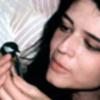In this tutorial we'll teach you how to make a table layout for your catalogue. Just like on our demo site - http://demo.jbzoo.com/table
1. Create a new item type
You should use a slug that consists only of english characters without whitespaces. In our example it is "table-item".


Create new elements for this item type


2. Create a new template layout for this item type
Let's assume that each table row should have its own detailed page. This means that we should have two templates: "teaser" and "full".
"Teaser" is a template for an item preview that will look like one table row.
"Full" is a template for a detailed item page.
Open this folder:
media/zoo/applications/jbuniversal/templates/catalog/renderer/item
(let's call this folder <ITEM-TPL> for convenience).
Create a new folder named "table-item":
<ITEM-TPL>/table-item/
Copy these files in it:
<ITEM-TPL>/full.php ==> <ITEM-TPL>/table-item/full.php
<ITEM-TPL>/teaser.php ==> <ITEM-TPL>/table-item/teaser.php
<ITEM-TPL>/metadata.xml ==> <ITEM-TPL>/table-item/metadata.xml
<ITEM-TPL>/positions.xml ==> <ITEM-TPL>/table-item/positions.xml
Edit following files in this way:
teaser.php
<?php
defined('_JEXEC') or die('Restricted access');
?>
<tr class="table-row item_<?php echo $item->id;?>">
<td><?php echo $item->id; ?></td>
<td><?php echo $this->renderPosition('cell1'); ?></td>
<td><?php echo $this->renderPosition('cell2'); ?></td>
<td><?php echo $this->renderPosition('cell3'); ?></td>
<td><?php echo $this->renderPosition('cell4'); ?></td>
<td><?php echo $this->renderPosition('cell5'); ?></td>
</tr>
positions.xml
<?xml version="1.0" encoding="utf-8"?>
<renderer>
<positions layout="full">
<position name="title">Title</position>
<position name="image">Image</position>
<position name="properties">Properties</position>
<position name="text">Text</position>
<position name="meta">Meta</position>
</positions>
<positions layout="teaser">
<position name="cell1">Table cell #1</position>
<position name="cell2">Table cell #2</position>
<position name="cell3">Table cell #3</position>
<position name="cell4">Table cell #4</position>
<position name="cell5">Table cell #5</position>
</positions>
</renderer>
3. Configure a template layout
In this example we'll only configure "teaser". You can configure "full" like you wish.


4. Create a new application
Make a convenient slug using english letters without whitespaces. In our example we'll call it "table-app". Don't forget to select "Catalog" template. Also, disable item wrapping.

5. Configure an application template
Open this folder:
media/zoo/applications/jbuniversal/templates/catalog/renderer/item_columns
Create a new file called "table-app.php" with the following contents:
<?php
defined('_JEXEC') or die('Restricted access');
$this->app->jbassets->tablesorter(); // adding sorting library
if ($vars['count']) : ?>
<table class="jsTableSorter tablesorter zebra">
<caption>Table</caption>
<thead>
<tr>
<th>ID</th>
<th>Name</th>
<th>Image</th>
<th>Field 1</th>
<th>Field 2</th>
<th>Field 3</th>
</tr>
</thead>
<tbody>
<?php
foreach ($vars['objects'] as $object) :
echo $object;
endforeach;
?>
</tbody>
</table>
<!-- sorting initialization -->
<script type="text/javascript">
jQuery(function ($) {
$('.jsTableSorter').tablesorter({});
});
</script>
<?php endif;
6. Fill your application with content
In our example we'll only make few items. They all will be on the frontpage. You can assign them to the specific category if you wish.


If you have a lot of content, you can use import.
7. Create a menu item for our table
In our example we'll use "ZOO Frontpage" menu type. You can use "ZOO Category" if you assigned your items to a category.

8. The result

Notes
- Our sorting uses "tablesorter" plugin. It has a lot of abilities and is very simple. You can read its documentation here - http://tablesorter.com/docs/
- Sorting works within one page
- Table layout will work for filter results
- In the application or category configuration you can add/remove additional text or media information above the table.
Edited by Kess, 03 February 2014 - 04:19.





 This topic is locked
This topic is locked















